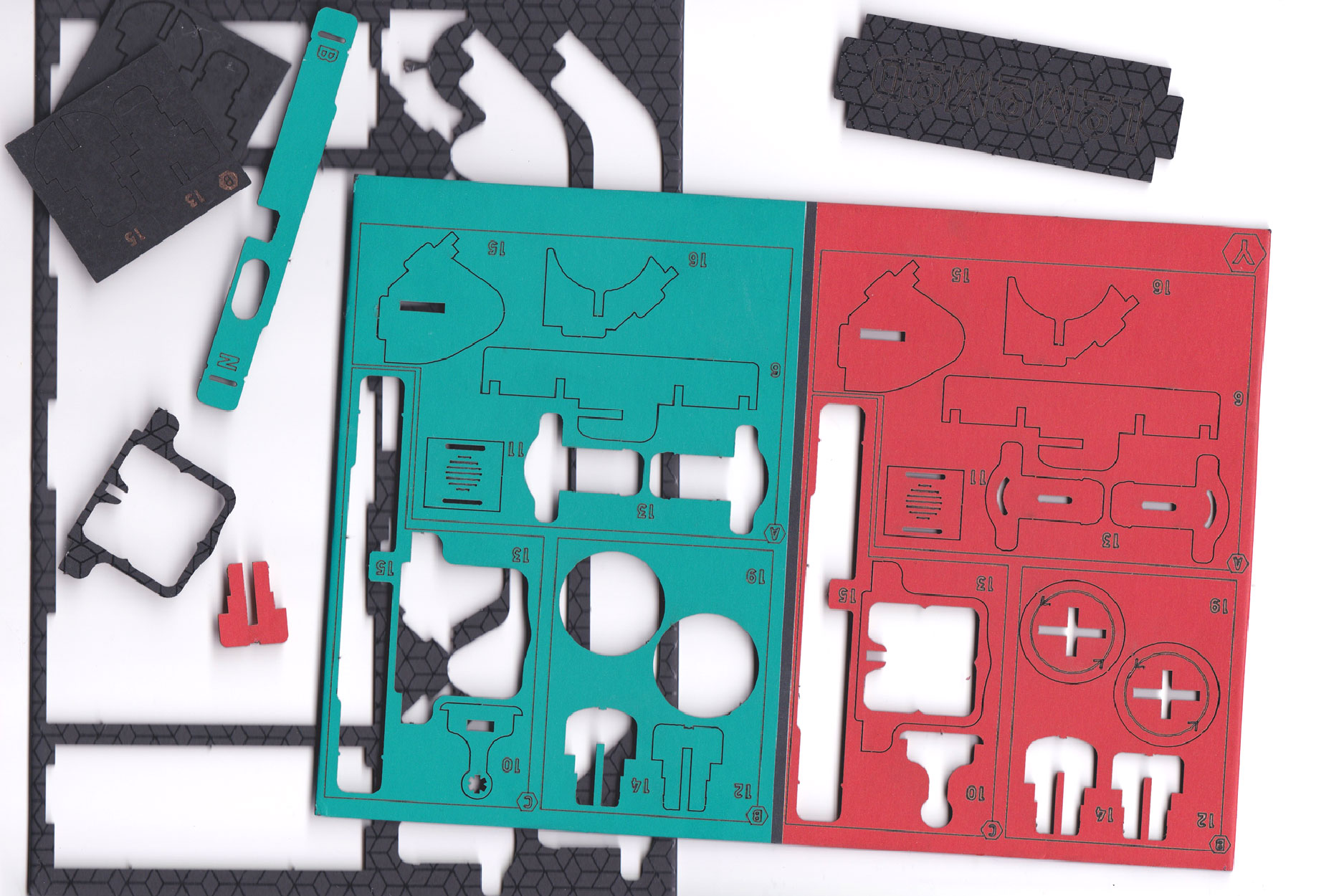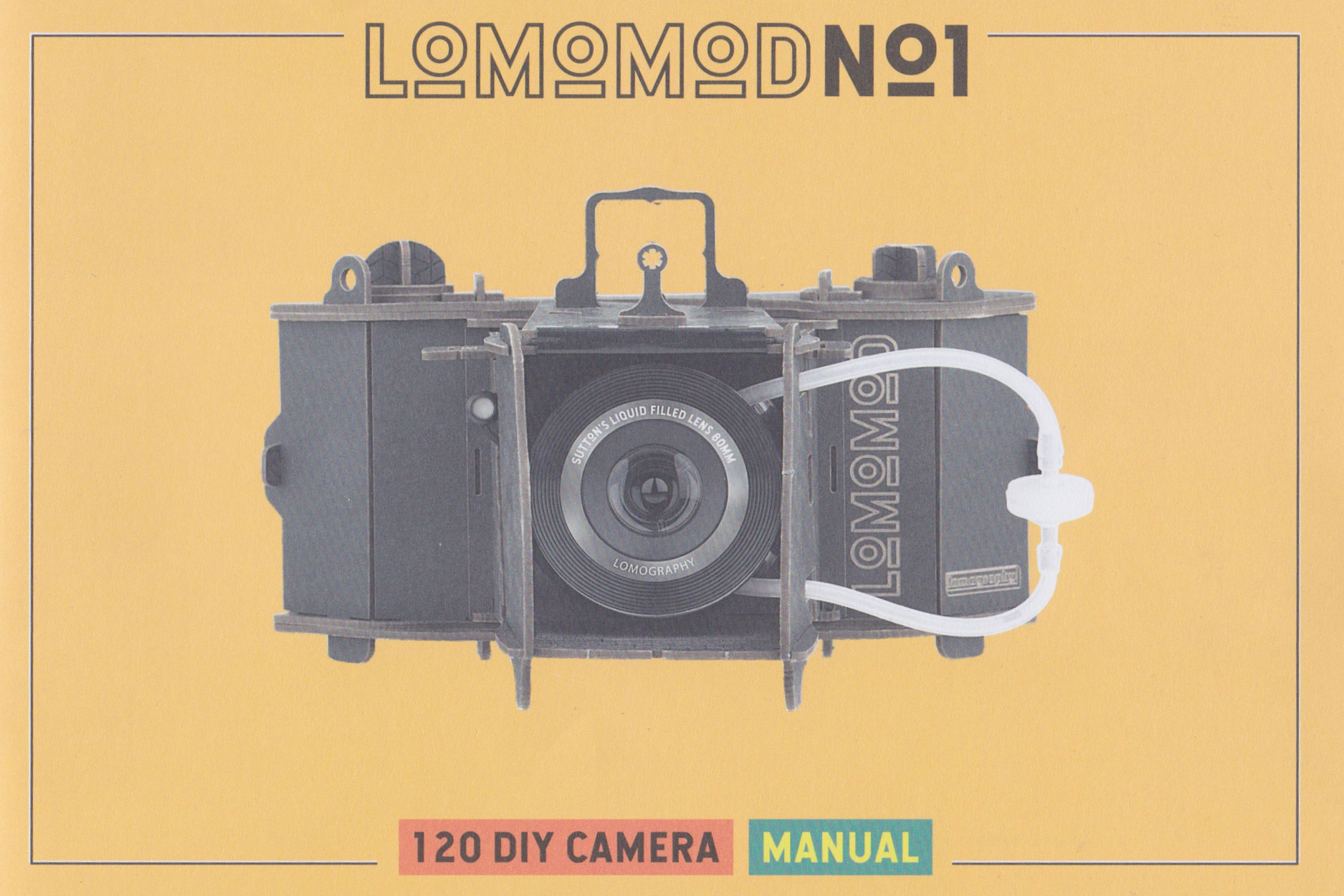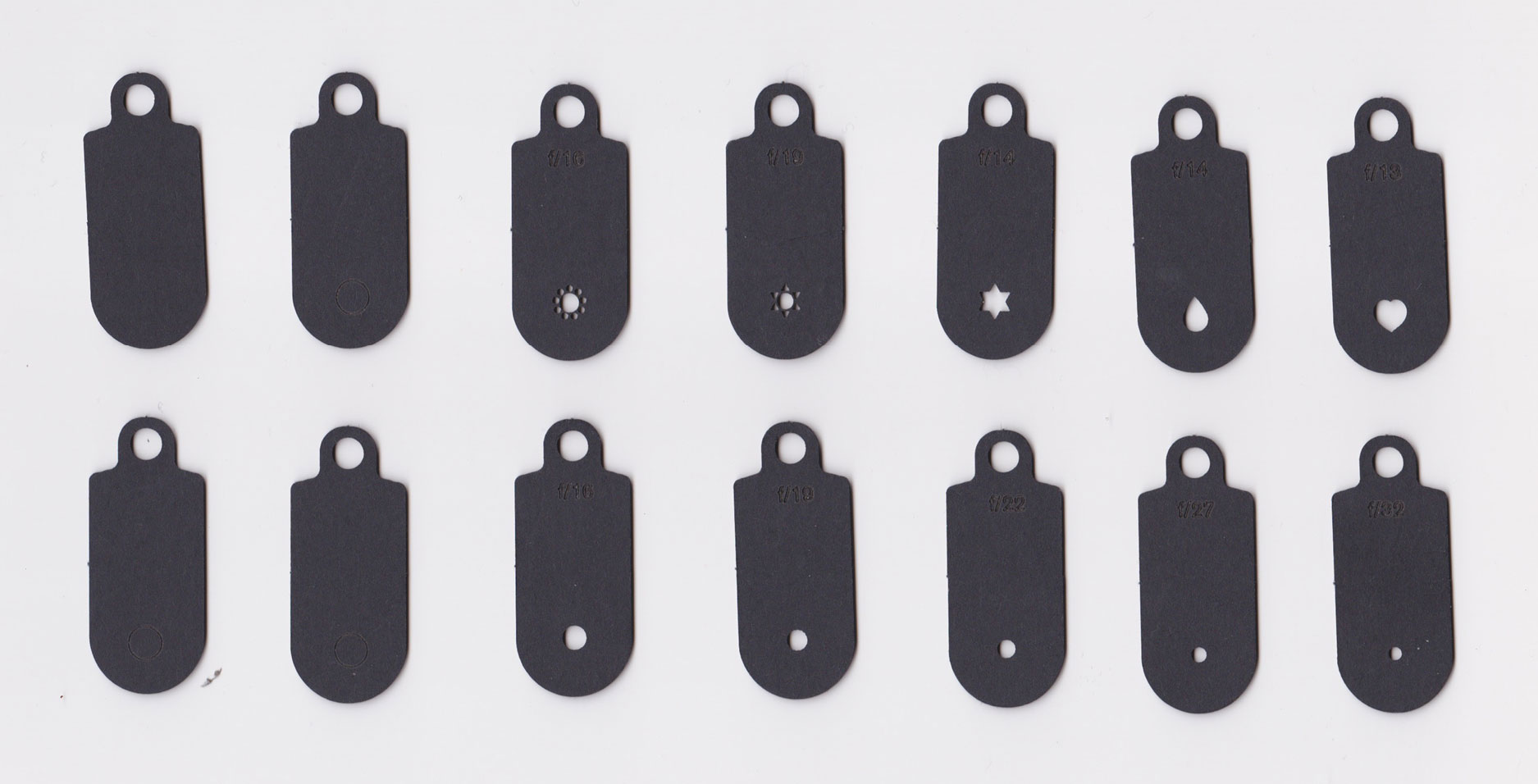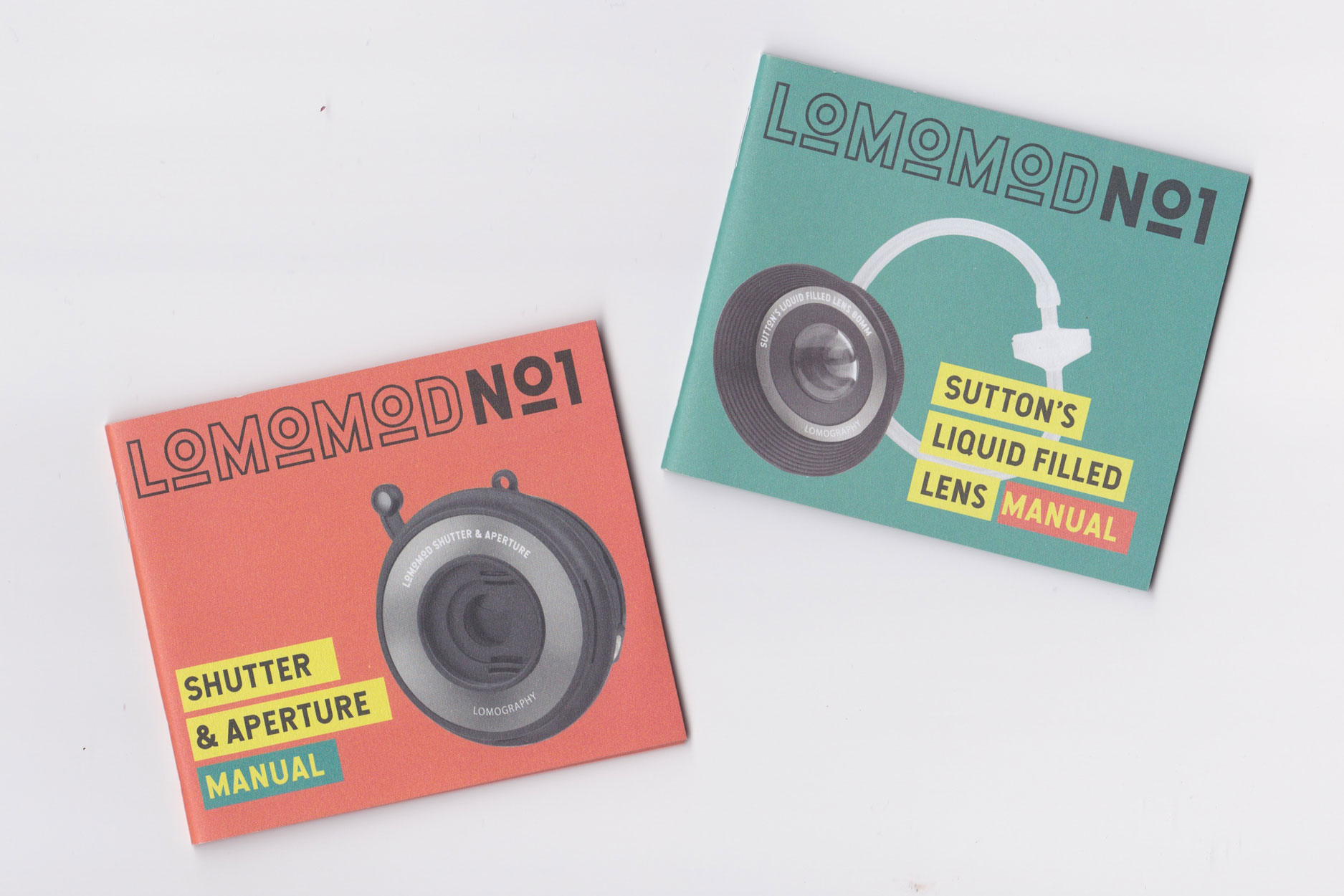
Inspired by the art of traditional Japanese Sashimono carpentry and Thomas Sutton’s water-filled glass sphere, the Lomography team – a creative movement dedicated to analogue photography – created the environmentally-friendly LomoMod No.1. This seemingly innocent love child of a project has been the source of controversy, anger and frustration. Costing only £49, it was meant to get you to ‘grips with the basics of photography, all while having fun with some DIY.’ Instead, the DIY cardboard camera has come under fire from many internet critics, hailed by many ‘barely a camera’. But how does it perform? The results might surprise you.

Tap Water, 80mm F/11 Fixed Focus 2.5m - Infinity, Single Exposure, Double Exposure
After the agonising pain of attempting to assemble it, the frustration of trying to wind up the film; having to disassemble it because the lens didn’t fit properly so I couldn’t put in the included aperture plates; and the lingering fear that I’m about waste film fuelled by comically angry internet reviews, I have honestly grown to love it. From the passion and thought that went into the concept to the meticulous curation of the box, both the project and the camera have its unique ‘soul’ – as the Lomography team describes it. The camera is a whole lot of fun and serves almost as a physical conglomeration of Lomography’s 10 Golden Rules for analogue photography. Namely, ‘don’t think’. Capture what is around you; experiment and just enjoy photography for what it is in its simplest form. I also tried the ‘shot from the hip’ with some funky results. But let’s wind back (ah, puns) to the construction process, followed by some technical information and finally, experimental shots.

Photos by Jack Lilley

The construction process is where most of the frustration comes from. You need patience for this DIY project, patience and willingness. For some, this could be a fun, relaxing afternoon project; for me, it was a bloodbath. I am not a calm person. I’m a very anxious one with a short attention span and yet I managed to construct a fully-functioning analogue camera out of cardboard! I think that the sheer amount of bad internet reviews come from not having patience for the camera and amping up the anger for comedic value. Don’t get me wrong I left this thing sitting on my mezzanine stairs for a week before I picked it up to customise it and finally use it. I too think that I would have a similar manifestation of frustration if I spend 5 hours assembling it, going out to use it straight away and ending up with blurry photos. This is one of the most common complaints – lack of sharpness. The first two photos I included in this blog post, especially the one with the ropes, was such a wonderful surprise. I did not expect photos to come out this clear. It would be ironic to spend such a long time figuring it out and re-assembling it (even though you’re not supposed to as you increase the risk of light leaks) only to receive blank prints.
The camera is flat-packed in a set of thought-out, eco-friendly, laser-cut cardboard sheets, along with some plastic and metal bits for the lens, mounting thread and tubing. This might remind some of Lomography’s previous DIY camera project – the Konstruktor. It was supposed to be the world’s first plastic 35mm SLR. It is great to see the brand utilising recyclable cardboard for this DIY camera rather than plastic. The packaging itself also didn’t include a lot of plastic, even though the cardboard was wrapped in some so that the small pieces don’t separate from their numerical order; making it harder to assemble the LomoMod. In the included book, there is a lovely little quote – ‘We’ve lived through the stone, bronze, and iron ages. Today, as we look around, we find ourselves in the midst of an undeniably plastic one.’ As someone who fancies themselves environmentally conscious, I appreciate that approach.
The box also includes a manual, two booklets discussing the lens and aperture /shutter module as well as a stunning book talking about Lomography’s journey to creating both, the camera and the inventive Sutton’s Liquid Filled Lens. For £49 you get a very well-curated box. The cardboard feels sturdy and when assembled the camera was far tougher than I ever expected it to be. There are also spare parts, a sufficient amount at that. These are imperative. Either parts of the camera won’t fit (so you will need to use the spare parts in hopes that they will fit better) or they will break off and need to be replaced. At the end of the day, it is still cardboard. I was in Sheringham, at the end of my second roll of 120mm film when suddenly... Gasp! The advancement knob broke off.

Now, what the manual and the information on Lomography’s website fails to communicate to you, is that you need to pay extra attention to how you assemble the lens. How you position it in the camera is also very important. I had to disassemble the camera to reposition the lens so that I could use it to its full potential, aperture plates and all. This is a little bit annoying since the manual clearly states that once you assemble the LomoMod you should not disassemble it as the cardboard parts might become loose or break.

The LomoMod lives up to its Sashimono carpentry origins; you assemble it just with your hands. In theory, this sounds like quite a meditative process, a bit like a 3-D puzzle. I did enjoy it for the first hour and then slowly became more and more tired of building it. The enthusiasm for the construction process came back when I started to customise the camera body with some paint and ink. This very process of customisation is what gives the camera its ‘soul’. Along the way, you can also choose which side of the cardboard you would like to use. The cardboard is double-sided with one side matte black and the other featuring a sleek, foil, geometric design. I decided to mix-and-match. The result is very Steam Punk; if it was orientated around cardboard. I like the look of it – no faults found there. In fact, it is still on display in my house and I am planning to use it again.

Breakfast Tea, 80mm F/11 Fixed Focus 2.5m - Infinity
The LomoMod is a versatile camera and even comes with aperture plates ranging from f/16 to f/32, five bokeh plates of different shapes and five customisable plates. I grouped them and attached them with a bit of string to one of the holes at the top of the LomoMod. The aperture plates are the main reason for me having to reposition the lens. There is a small opening at the top of the ‘lens barrel’ which has to be aligned with the aperture plate opening on the lens. You do have to be precise and patient to get it right, or at least this was my biggest struggle with the camera construction process.

I wanted to test out the aperture plates but unfortunately, I didn’t get my prints back in order so I cannot distinguish which is which exactly. I took the below photos standing in the same location, at the same distance away from the building so hopefully, you can see the difference. I believe that the first photo was taken at a wider aperture; whereas, the second one has a bit of a nice blur around the edges. Regarding the bokeh plates, I also experimented with these. The idea was to fill the lens with grapefruit juice and take a portrait with the heart bokeh plate followed by double exposure of the film with some flowers. Sadly, I did not get that photo back from the shop.

Tap Water, 80mm Fixed Focus 2.5m - Infinity
Let’s talk about the Sutton’s Liquid Filled Lens. Now, this is interesting. The lens does not incorporate lens elements; instead, it uses liquids, predominantly water, to focus. You have to use the included syringe to inject liquid into it if you want good results. This was my first mistake and a silly one as well. Originally I wanted to take these photos in Camden but I forgot to take the syringe. Something to keep in mind. By no means are you only limited to water. You can inject whatever liquid you want into the lens trough the tubing, from beer to coffee. These will act as gel filters but with more interesting, dreamy results. The colour of the liquid is not the only variable affecting the image. Its’ viscosity, transparency and whether it is fizzy or not will create different effects. Fizzy drinks will diminish the sharpness of your photos; whereas, water will give you the clearest results. Spec-wise, the lens offers a focal length of 80mm, max aperture of f/11 and a fixed focus with 2.5m – infinity focusing distance. The prefabricated shutter/aperture module has a ‘Normal’ and ‘Bulb’ mode. The ‘N’ mode is for daylight and operates at a 1/100 shutter speed. The ‘B’ mode holds the shutter open for longer – you can also hold it down to let in more light – making it ideal for indoor photography and low-light situations. Because you can keep the shutter open for as long as you like with the ‘B’ mode you can work with long exposure photography. If you’re planning on doing so use a tripod – the LomoMod has a standard mounting thread which was one of the biggest surprises for me. I didn’t think it would have one and no the thread is not cardboard, it is metal.

The lens is without a doubt, the most unique aspect of this product. Seeing the reaction to it, Lomography should make Sutton’s Liquid Filled Lens available for purchase on its own. A lot of people have been lens whacking it onto their DSLRs for some gorgeous effects. There is so much room for experimentation and creativity. Not only with the lens but also with the camera body. You could potentially get rid of the lens and go against Lomography’s warnings of disassembling the camera, instead grab a piece of cardboard or construction paper and turn it into a pinhole camera. I want to try it out for another blog post. I’m a firm believer in being creative with whatever you have at hand. The impact of a piece of work is dependent on the artist behind it rather than the tool itself. Perhaps this is why I’m drawn and intrigued by this cardboard camera that most people find to be, for momentary lack of a better word, redundant. The ideology and approach to photography from the maker’s perspective shines through this product.
Here are some of my experiments with different types of liquids, including breakfast tea, tap water, red wine and lemonade. The lens did not like lemonade judging by the last set of photos.

Breakfast Tea, 80mm F/11 Fixed Focus 2.5m - Infinity

Tap Water, 80mm F/22 Fixed Focus 2.5m - Infinity, Double Exposure, Single Exposure

Left: Double Exposure Red Wine & Tap Water, 80mm F/22 Fixed Focus 2.5m - Infinity
Right: Single Exposure Red Wine, 80mm F/32 Fixed Focus 2.5m - Infinity

Left: Red Wine, 80mm F/11 Fixed Focus 2.5m - Infinity, Single Exposure
Right: Red Wine, 80mm F/22 Fixed Focus 2.5m - Infinity, Double Exposure

Lemonade, 80mm F/11 Fixed Focus 2.5m - Infinity, Single Exposure, Double Exposure
As mentioned before the LomoMod takes 120mm film, and Lomography produces a lot of film. There’s plenty to choose from. If I’m going to carry out my LomoMod turn pinhole camera experimentation, then I would pick the Berlin Kino 120mm film, really go for that Joel-Peter Witkin/Jacob’s Ladder feel.
Lomography Colour Negative 400 120 Film
Take beautiful, crisp, and colour accurate shots with the Lomography Colour Negative 400 120 Film. Created for use with medium format cameras, this colour negative film offers optimum results when used under sunny or cloudy conditions. Furthermore, the ISO 400 film has smooth tonality, vivid colours, and fine resolution, making it a suitable option for the press as well as action photography.
£33.20 View
I imagine some folk are wondering why and how I wrote so much about a seemingly low-profile product. Isn’t it a bit pointless? Yeah. There are more important things to wonder about. However, if the product and the concept behind it make me ponder so much and anger others, then it had to do something right. I’m yet to explore the full potential of the LomoMod No.1. It has a PC-Sync and cable release socket for flash photography, meaning you can use it for night shoots. After putting effort into building it, customising it, learning about it and experimenting with it, I’ve grown a bit attached. As Lomography stated, we are disconnected from our possessions, living in a world filled with mass-produced items. There is a ‘lack of sentiment and personalization – everything is expendable’ – in the words of Lomography. The LomoMod No.1 is the first step in an ongoing project that I cannot wait to see evolve as I fully agree with the artistic ideology behind it. Rather than just another camera or a soulless product costing thousands of pounds, the LomoMod is more of a statement on consumerism and sustainability with a somewhat flawed execution. Maybe don’t take it out in the rain though and don’t be too aggressive with the advancement knob so that the sustainability part holds up.

About the Author
Patrycja Reimus is a Norwich based horror artist and an award-winning filmmaker. She is also our Product Content Specialist who frequently enjoys writing for our blog. For more information about her work please visit patrycja-reimus.squarespace.com. You can also follow her wonderfully weird and obscene imagery on Instagram @reimuspati_art or stalk her personal life @patrycja_reimus.


